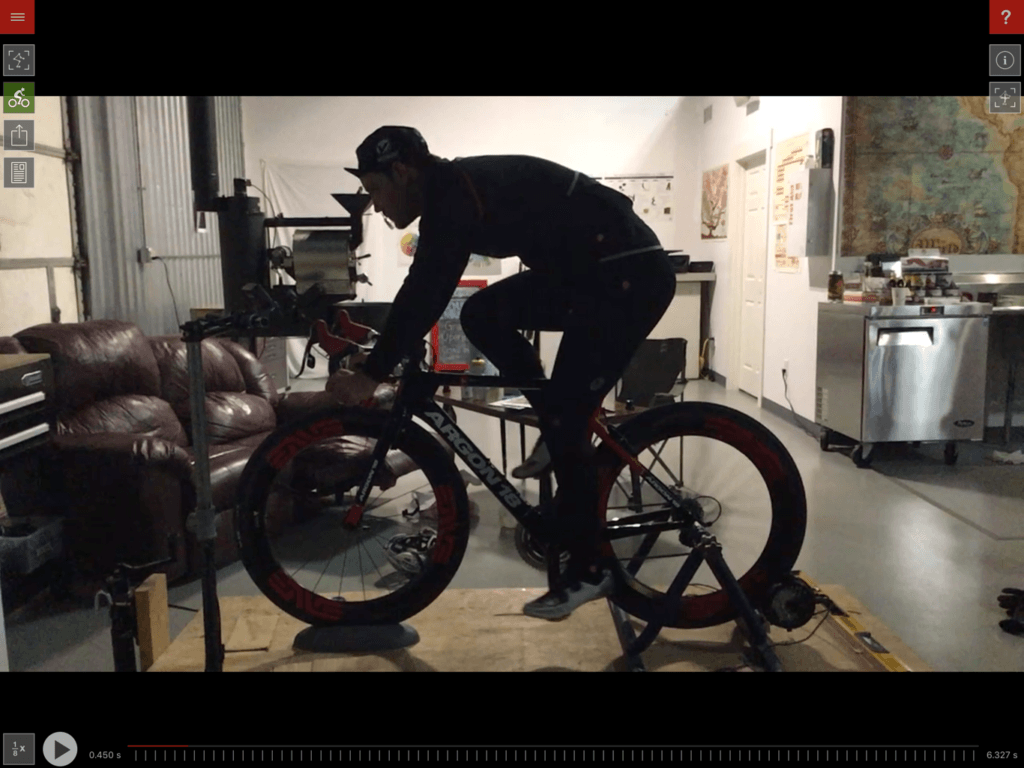Bike fitting: The toe pointer versus heel driver

Our Coaches can help you improve performance!
Check out our Coaching Packages
As a cyclist, I’m sure you have noticed a difference in people’s body shapes and how they look on the bike. Of all the things you notice of how other people fit on the bike, be it aesthetically pleasing body shapes on the bike, or weird humps and square pedals strokes, one major thing that drives how a rider fits on the bike is whether the rider is a heel driver or toe pointer.
Neither option is better or worse than the other and each style can produce a great smooth powerful pedal stroke. In the fit process we need to recognize what type of stroke the rider has and fit them keeping their natural pedal stroke and ankle angle within the proper fit angles and drivers.
During the fit you have to recognize the pedaling style and understand how it will drive the fit. If you have a 6 foot tall person and you estimate their saddle height as you would for a toe pointer but they are a heel driver, they will have a 3-4 cm discrepancy and should change your starting point for the fit protocol height.

This rider is an example of a heel driver
Above is an example of a heel driver with around a 25 degree pedal spindle to heel angle. This is a snapshot of a video taken while the rider is pedaling under load. This video capture is key. If you just tell a rider to “pause, put your left foot all the way down” you’ll find that people heel drive in this static position all the time. They put their weight through their heel when they do not do that naturally in a pedal stroke. There’s a bunch of different ways to measure the degree of heel drive or toe point but the main goal is just to recognize the difference objectively.
There’s not really a huge database for this observation. Maybe Dan at Slowtwitch.com has something- he is usually ahead of the game on most of this stuff. From what I have seen, neutral to toe pointing represents most riders. The rider below is not necessarily a huge toe pointer but you can see the difference between the two riders and how it will drastically change the riders fit saddle height at the end of the fit process. You want to recognize early the rider's style and ankle angle and make sure that it's their natural style and that they aren’t changing as the fit progresses. We don’t want to change their style we want to make sure they are most comfortable and efficient with their natural pedal stroke.

This rider is an example of a toe pointer.
Further comparing both riders, they have a similar knee angle. There’s ideal angles and ranges for knee angles also driven by the riders feedback though the fit protocol. Within the proper setback, height, knee angles, etc. the rider keeps their natural ankle angle whether that is a toe pointer, heel driver or neutral.
When fitting a noticeable heel driver or toe driver, there are some things to be careful of...
With a heel driver, they tend to look low in saddle height. As you raise the saddle height through the fit, make sure they don’t lose their heel angle and start to reach for the pedal with their ankle first or they will start to rock. Focus on the proper set-back and height to keep the ankle angle. Then push the knee angle for efficiency but not to the point the rider feels high or that they start to move their natural ankle angle.
With the proper bike fit tools you can track these angles dynamically while the rider is moving with video though your adjustments. This is where we start to have issues with calculations or fit tools that try to take out the human element. Not everything is accounted for.
Personally at my height and leg length, a few fit tools and systems want me to have 3-4cm higher saddle height. At almost every bike fit I’ve had, the fitter sets me up this way. As a result, I’m toe pointing, my calves are burning, my ankle is ticking down at the bottom of the stroke and I’m very uncomfortable. I’m being fit to what the system wants and the system doesn't know that I’m a neutral foot/heel driver.
Listen to the rider and when you have a novice, inarticulate rider, look at their pedal stroke when they are low and under no stress and follow that as the saddle height goes up.
Learn more about our F.I.S.T. certified bike fits at Source Endurance Training Center of the Rockies in Fort Collins, CO, and schedule yours today. Click here.
Our Coaches can help you improve performance!
Check out our Coaching Packages
